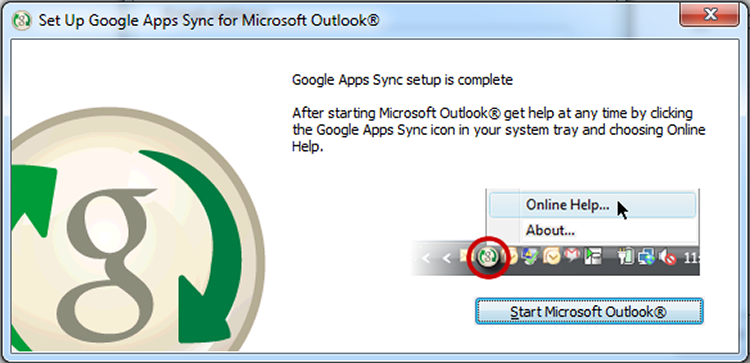Install and set up GSSMO: First, you need to install GSSMO and create a G Suite profile in Outlook. Can I install GSSMO on my Mac machine? No, the G Suite Sync for Microsoft Outlook is not meant for macOS. Actually, Outlook for Mac has no support for Messaging Application Programming Interface which is mandatory for the working of GSSMO.


Compared to the Competition
Easier to set up
CompanionLink for Google is easier to set up than any competing product.
Automatic Push Sync

CompanionLink for Google is the only Google Sync tool that supports G-Suite Calendar V3 Automatic Push sync. That means changes from your phone get to Outlook in seconds, not minutes.
Portable License
You can install it on up to three computers; work, home and laptop. The competitors products only install on one computer. When you buy a new computer, you can install CompanionLink on it. Your license is portable and tied to your Email Address. With the competitors you need to purchase a new license whenever you buy a new computer.
Telephone Tech Support
We offer support by Email and Phone. You can call us any time during our business hours. Only one of our competitors offers telephone support, and only for two years from your purchase. CompanionLink support is for the life of the product. We also offer premium support where our technicians will log onto your PC and set up your sync.
More Data Integrity
CompanionLink synchronize more telephone fields and custom fields than any other product. We synchronize multiple Calendars from Google so you can schedule multiple people from your Outlook Calendar. We support attachments with Google. We support Sub-Tasks for the new Google Tasks app.
Competing Product Comparison
Click here to compare competing products
CompanionLink offers a smooth alternative to G Suit Sync, but because GSSMO connects to the folder structure of Outlook it is required that you move your data to an independent Outlook folder. The steps are:
- Make a new local PST file that is not connected to GSSMO
- Move your Outlook Contacts, Calendar and Tasks.
- Remove the GSSMO connected data file so GSSMO no longer attempts to sync.
- Set up CompanionLink to sync to your new local Outlook folders.
Reconnecting Gmail to Outlook without G Suite
- Open Outlook, click File in the top left, and click Add Account.
- Use the following guide to connect the Gmail account to Outlook located Here
- Note: If given the choice when entering the Google login information choose New Outlook Data File under Deliver New Messages to.

Gssmo Tool Download
- Once the Account is added > Click 'File' > Click 'Account Settings', and select it again from the drop-down menu.
- Select the 'Data Files' tab, select the new non G Suite data file > click 'Set As Default'.
- Close and reopen Outlook.
- Open the Contacts/People in Outlook. On the left under My Contacts, click the folder associated with G Suite and do the following to move the contacts to the new folder:
- Click View, select Change View on the left, and select List.
- B. In the contacts list, click one contact to highlight it and press Ctrl + A to highlight all contacts in the list.
- C. Drag and drop the highlighted contacts to the new secondary Contacts folder, release the right click and select Copy Here.
- Repeat the above step 6 for Calendar, Tasks, and Notes in Outlook.
- When all data is in the new folders, click File > Click Account Settings, and select it again from the drop-down.
- Under the Email tab, select the G Suite associated account > click remove. Choose Yes when asked and close this menu.
- Uninstall the G Suite program.
Now that the data file has been removed from G Suite's control and the data exists in the local Folders we can install the CompanionLink Program.
Installing and Setting up CompanionLink
- Once you have readded the Gmail account to Outlook without GASSMO. You can now install CompanionLink to keep both Outlook and Google in sync. You can follow the Setup Guide for Syncing Outlook with Google located Here
Install Gssmo For Mac Os
